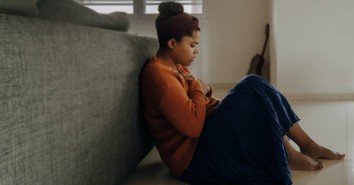Cambodia’s Killing Fields: Where the Clothes Cry Out

September 24, 2007
Most Americans have heard the name Pol Pot. We know he was a “bad guy” and that something awful happened under his leadership. Most Americans have heard of the “Killing Fields” and know that, likewise, something awful happened there. But the details are buried way back in the lost memories of a boring history class. I was that person, but no more.
I recently returned from a trip to Cambodia. It was one of those trips that grabs you by the throat and refuses to let you go until you at least make an attempt to process the sensory overload that screamed for your attention. For me, it was the clothes coming out of the ground that impacted me the most. Let me explain.
I was in Cambodia on behalf of the Bible League, a ministry organization that annually provides millions of Bibles around the world. Our group was in Southeast Asia to see their work and get some understanding of what God is doing in that part of the world. I’ve had the privilege of traveling extensively, but never to Asia, and I must admit I was not well prepared for what I would see and experience.
After our arrival we were given a quick history lesson on Cambodia. Almost concurrent with the time America departed Vietnam a brutal dictator named Pol Pot captured the leadership of Cambodia. As a committed Maoist he established the Khmer Rouge—or the “Red Cambodian” party. He issued a call to Cambodians around the world that had fled the country to return and assist him in creating a new society. Tragically, thousands heeded his call.
Shortly after seizing power the true evil of Pol Pot began to surface. Nearly every family in the country was divided and sent to forced labor camps. Mothers and fathers were separated from each other and their children with most never reunited. A systematic “cleansing” of the general population began. In less than four years nearly one-third of the entire population of Cambodia had been tortured and killed. The victims were chosen daily and transported to 343 locations across the country where they were shot, beaten, poisoned and dumped into mass graves. DDT (a toxic insecticide) was sprayed over the pits containing the bodies each night to control odor, insects and to kill those who were still alive when buried. Estimates vary from 1.3 to 3 million killed and buried in mass graves. The exact number will never be known.
In 1979 troops from Vietnam marched into Phnom Penh and drove Pol Pot’s army to the jungles and a 15-year, full blown civil war ensued.
Unspeakable Horror
We visited the central prison that Pol Pot used as a torture chamber and witnessed one of the Killing Fields. I was not prepared for either. The prison had been the largest high school in the capital city of Phnom Penh when the Khmer Rouge transformed it into a diabolical center for torture and death. The cells are still as they were, tiny and foreboding. The shackles that chained prisoners to the walls and floor still bear mute testimony to man’s capacity for unspeakable brutality. Blood stains are still evident on the floors. The walls are lined with graphic pictures taken of the prisoners at the time of their arrest and death. While our sensitivities are assaulted by places like this, the historical record benefits from the detailed records kept by the butchers. The pictures display eyes filled with terror, bodies mutilated. We were given an unforgettable theological lesson on the depravity of man. But more than the pictures, it is the clothes that haunt me.
The Clothes Cry Out
After leaving the prison we journeyed to one of the Killing Fields. As we drove into what has now become a national memorial, the first thing to come into our vision was a large tower approximately fifty feet high. I could see that it was constructed with glass panels ascending the entire height of the six-sided tower. As we emptied the car and began walking toward the tower I saw the skulls, human skulls. The entire tower is filled from bottom to top with thousands of excavated human skulls from the mass graves. Scores of empty eye sockets stared at me through the glass, each a testament to a life taken in an indescribably cruel manner. It was as if somehow the terror of their last moments was indelibly sealed in each skull.
We walked slowly and reverently around the memorial site. The pits that became the mass graves are now empty, some filled with water from recent rains, others dry and macabre. As we walked I was shocked to see clothing protruding from all over the ground. This is what gripped my heart. It’s been 30 years since these innocent people were slaughtered and almost 20 years since the graves were excavated, yet every time it rains clothing from the victims emerges from the ground. You can’t avoid it. No matter how carefully you try to step you find yourself walking on a shirt sleeve, the collar of a shirt, a trouser leg or a blouse. You occasionally trip on the tip of a sandal. It’s obvious that some of the clothing belonged to children by the tiny size of the sleeve coming up from the ground. I felt like I was desecrating their graves by walking on the clothing they were wearing when they died, but it was nearly impossible to avoid.
Suddenly a person from our group gasped loudly and said, “Look at this!” At the base of a nearby tree some bones had recently emerged from the ground along with several teeth. We stared in disbelief that after all these years more witnesses to the brutality of mankind were emerging from the ground where they were silenced three decades ago.
I thought of the Old Testament story of Cain slaying Abel. When confronted, Cain denied his crime but God responded by saying, “What hast thou done? The voice of thy brother’s blood crieth unto me from the ground” (Gen. 4:10). The blood of the Killing Fields has long washed away, but the clothing screams at you as you navigate the paths from grave to grave.
Hear and Act
My purpose for being in Cambodia was to see the need for Bibles, and report that need to my radio audience. This I will certainly do. I just wish that somehow you could hear the cry of the clothing. The Killing Fields can never be allowed to happen again. The Word of God and the transformation that it brings is the only sure antidote. I, for one, am determined to hear the voice calling to me from the graves of the Killing Fields. The door is wide open to give Cambodians the gospel—to distribute Bibles and tell them the good news. Can you hear their voices? Will you listen to their cries?
Bob Burney is Salem Communications’ award-winning host of Bob Burney Live, heard weekday afternoons on WRFD-AM 880 in Columbus, Ohio. Contact Bob at bob@wrfd.com. If you would like to join Bob in helping support the Bible League’s work in Southeast Asia, please go to WRFD.com and look for the Bible League graphic.
Originally published September 27, 2007.







